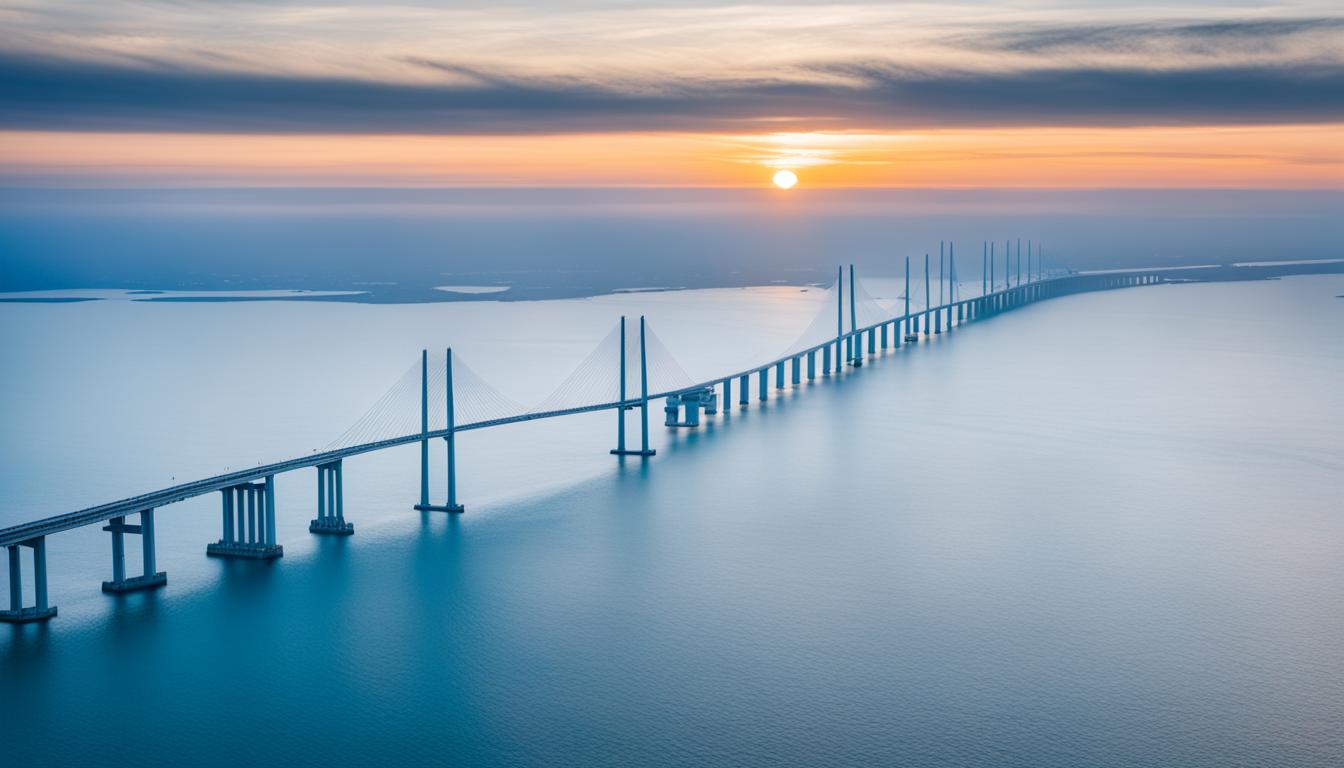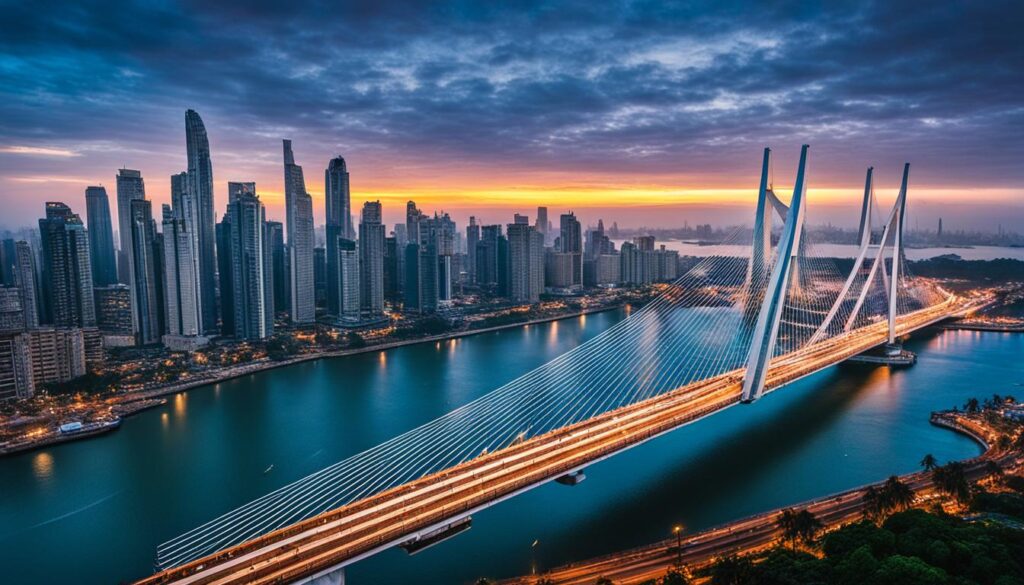
World’s Longest Sea Bridge: Engineering Marvel
Have you ever marveled at the sheer ingenuity of human engineering? From towering skyscrapers that seem to touch the heavens to intricate transportation systems that connect distant cities, our capacity for innovation knows no bounds. Today, I want to take you on a journey across the seas, where two remarkable engineering marvels stand as testaments to human progress and the power of infrastructure. These record-setting sea bridges not only defy physical boundaries but also symbolize the unwavering determination and technological prowess of their respective nations.
Step with me onto the shores of the Pearl River Delta, where the world’s longest sea bridge spans an astounding 34 miles, connecting territories rich in culture and history. China’s exceptional infrastructural prowess is on full display here, as the bridge unites Hong Kong, Macau, and the mainland city of Zhuhai. This marvel of modern engineering, constructed with over 400,000 tons of steel, stands as a testament to China’s unwavering commitment to progress and connectivity.
The Impressive Atal Setu in India
In India, Prime Minister Narendra Modi recently inaugurated the Atal Setu, an engineering marvel that proudly stands as the longest bridge in the country. Spanning an impressive 21.8 kilometers, the Atal Setu connects Navi Mumbai to Sewri in Mumbai, establishing a crucial link between these bustling cities.
Built at a cost of Rs 17,840 crore, the Atal Setu incorporates advanced technologies to minimize its environmental impact, showcasing India’s commitment to sustainable infrastructure development. This remarkable feat of engineering is expected to reduce travel time and greatly enhance connectivity not only between Mumbai and Navi Mumbai but also to Pune, Goa, and Southern India.
The inauguration of the Atal Setu is a significant milestone in the endeavor to improve urban infrastructure and connectivity in Maharashtra, underscoring India’s dedication to developing robust transportation networks to drive economic growth and facilitate smoother travel experiences for its citizens and visitors.
“The Atal Setu is a testament to India’s engineering prowess, standing tall as an exceptional example of innovation and vision. This bridge will serve as a lifeline, connecting people, businesses, and communities, and ushering in a new era of progress and development.”
Mumbai’s Trans Harbour Link
The Mumbai Trans Harbour Link (MTHL) is set to become India’s longest and the world’s 12th longest sea bridge. Spanning 21.8 kilometers, with over 16 kilometers stretching over the sea, this ambitious infrastructure project aims to enhance connectivity and drive economic growth in the region. With its strategic location, the MTHL will connect South Mumbai to Navi Mumbai and the Mumbai-Pune Expressway, providing faster access to major highways, airports, and ports.
Funded primarily by Japan International Cooperation Agency (JICA), the Mumbai Trans Harbour Link is expected to have a substantial economic impact. It is estimated that the bridge and its associated projects will boost the Maharashtra GDP by at least 5% and the national GDP by 1%. This significant increase in economic activity will create new opportunities and improve overall living standards for the people of Mumbai and the surrounding areas.
The construction of the MTHL incorporates modern technology and stringent engineering standards. Designed for a lifespan of 100 years, the bridge showcases India’s capabilities in advanced infrastructure development. It is a testament to the country’s commitment to connect urban centers, facilitate trade, and create a sustainable future.

In conclusion, the Mumbai Trans Harbour Link holds tremendous potential to transform connectivity and drive economic growth in the region. As India’s longest sea bridge, it will not only improve transportation but also foster development and prosperity for the people of Mumbai. With its impressive engineering and long-term economic impact, the MTHL exemplifies India’s commitment to building a robust and interconnected infrastructure network.
Conclusion
The construction of the world’s longest sea bridges in China and India is a testament to the remarkable engineering achievements in both countries. These bridges not only provide vital connections but also have a profound economic impact.
By reducing travel time and enhancing connectivity, these engineering marvels promote economic activity and facilitate smoother trade and logistics. They serve as transportation masterpieces, showcasing the technological advancements and expertise in bridge construction.
Furthermore, these record-setting sea bridges symbolize progress and development in their respective nations. They are not only feats of engineering but also symbols of China’s infrastructure prowess and the ambitious strides made in India’s infrastructure sector. The economic impact of these projects is significant, with improved connectivity stimulating growth and bringing economic benefits to the regions they span.
Source Links
- https://www.earthcontactproducts.com/engineering-marvel-giant-seabridge-in-china/
- https://www.linkedin.com/pulse/indias-engineering-marvel-atal-setu-longest-sea-bridge-sharma-zrgyf?trk=article-ssr-frontend-pulse_more-articles_related-content-card
- https://timesofindia.indiatimes.com/city/mumbai/the-engineering-marvel-behind-mumbai-trans-harbour-link-indias-longest-sea-bridge/photostory/106694415.cms

Leave a Reply